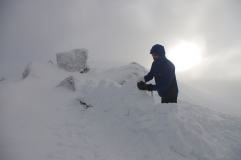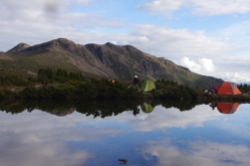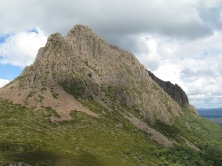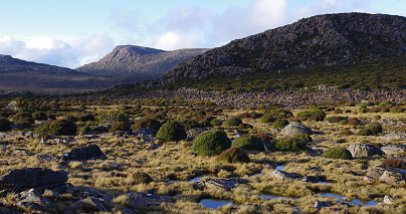An update on what ecological communities have been burnt.
Fires have burnt across huge sections of Tasmania this summer (and some continue to burn despite recent rain and milder conditions). There have been grave fears that fire sensitive vegetation – plant communities that will not recover or recover very slowly after fire – had been badly impacted by the fires.
An initial analysis (based on the fires up until Feb 5) of what types of vegetation have been burnt so far in this summer’s fires is heartening. According to Dr Sam Wood, only very small areas of fire sensitive vegetation have been identified as being burnt. “The majority of the burned area is comprised of flammable vegetation communities” (ie, communities adapted to fires).
Dr Wood and colleagues report that:
“We analysed vegetation maps (TASVEG: https://www.thelist.tas.gov.au) and the mapped perimeters of the major fires (up to February 5 2019; http://www.fire.tas.gov.au/) to determine the proportion of the burned area covered by the dominant vegetation communities in Tasmania (Figure 1; Figure 2). Our analysis does not include unburned patches within the fire perimeter. These will be accounted for in subsequent analyses based on high resolution satellite imagery.
Our analyses show that – so far, at least – only 3.2% of the total burned area of the 2019 fires in Tasmania is rainforest (Figure 2). This includes fire complexes burning in the Tasmanian Wilderness World Heritage Area, where rainforest accounts for 3.5% (Gell River), 3.7% (Southwest) and 3.9% (Riveaux-Pedder) of burned area (Figure 1). This is consistent with past fires in Tasmania’s south-west, where rainforest occupied approximately 6% of total burned area (Wood et al. 2011; Marsden Smedley and Kirkpatrick 2000). Based on our analysis, rainforest types that are known to be particularly vulnerable to fire (King Billy Pine, Pencil Pine) have largely escaped the fires to date (~2 ha burned) but this will need to be confirmed with on-ground reconnaissance”.
Of course, the large areas of ‘wet eucalypt’ forest that have burnt will often contain many species of rainforest or other Gondwanic relic vegetation, so fires in these areas will negatively impact on these species and the distribution of future rainforest. But this initial assessment seems to indicate that the impacts on relic vegetation communities was not as bad as could have occurred.
Lynda Prior, a fire ecology and forest growth researcher at the University of Tasmania, said of Gell River fire “It’s classic south-western Tasmania, with lots of different types of vegetation, all intermixed with each other, and some are fire sensitive and some are quite fire tolerant,” she said.
“You can see in the photos the fire has eaten around the edges of the vegetation in many cases.
“Because the trees aren’t so flammable, and they’re often in the damper parts of the landscape, the fire can’t penetrate the area quite as easily.”
Dr Prior said in certain areas in the TWWHA, the fire had burnt close to precious vegetation like Nothofagus, Huon pine and other low-altitude conifers like the King Billy pine.
She said if those species are burned, they may never grow back.
“They are very slow to recover. In some cases, they might take centuries,” she said.
And what’s obvious from this summer is that the entire landscape was so dry – which probably means areas of wet eucalyptus forests that would normally not burn (and which are likely to contain precious vegetation like Nothfagus) will have burnt more than would be likely in a ‘normal’ summer.
Hopefully the full picture will become apparent in coming months.
























































February 12, 2019 at 6:39 pm
Thanks for the update Cam.
February 12, 2019 at 7:11 pm
Yes, thanks, I’ve just been on the fire service website to get a bit of an update.
February 13, 2019 at 9:02 am
Still sad but glad that it’s not as bad as it could have been.
[from Cam: yes, its still tragic. So much rainforest veg within the wet eucalypt forests has been burnt.]
January 25, 2020 at 8:45 am
It’s ironic that the obvious emf effect on the cloud cover seen in the satellite image, is ignored.
[From Cam. I’m sorry, what? Could you explain this as I don’t know what you’re talking about. Interested to know.]